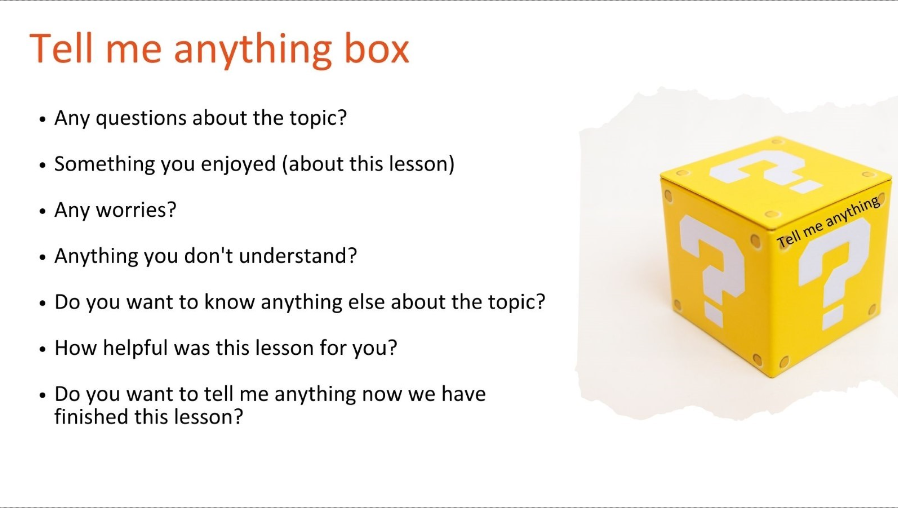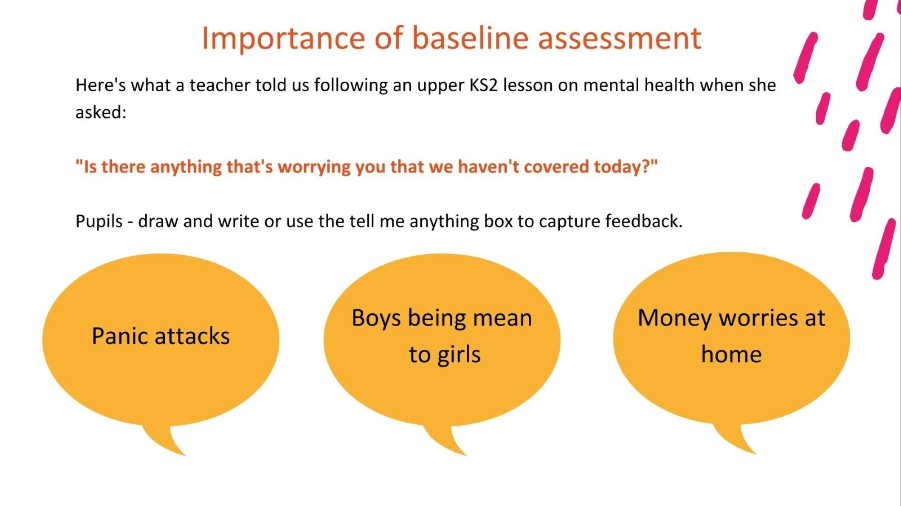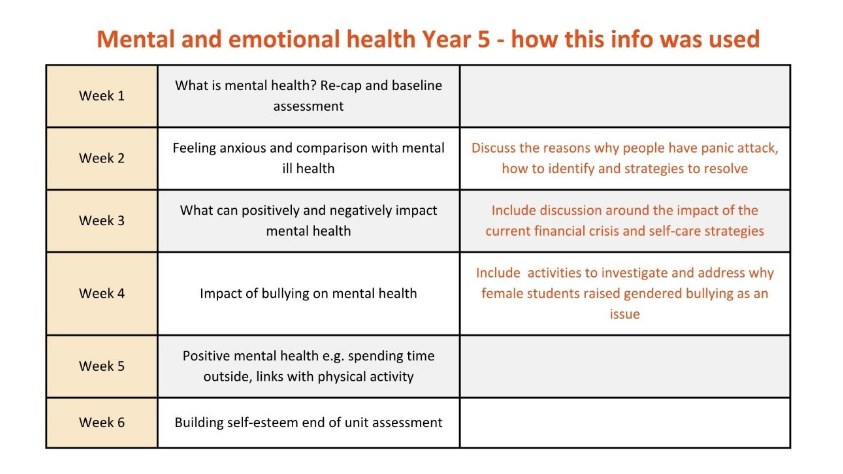- Latest NewsUp-to-date articles giving you information on best practice and policy changes.
- Model PoliciesA comprehensive set of templates for each statutory school policy and document.
- Skills AuditsEvaluate your skills and knowledge, identify gaps and determine training needs.
Using pupil voice in your pastoral care strategy
How can you give young people a safe space to provide feedback and make the most of pupil voice? Angela Milliken-Tull discusses using pupil voice to personalise your PSHE lessons
Using pupil voice is a terrific way to build a sense of community and cohesiveness. Often pupils are asked to complete questionnaires and the findings are never shared with them. An easy way of informing pupils that you value their voice is to share survey results with them.
How to collect pupil voice
It is beneficial to use multiple sources of data collection rather than rely on just one. For some pupil council is synonymous with pupil voice, however, there are limitations when this is used in isolation.
Often, the children most likely to represent their peers are noticeably confident and while this is a good mechanism for capturing views there is a danger some are not represented, particularly those who may be more reticent about sharing their views and opinions.
So, what else can be used?
Online, anonymous questionnaires
| Advantages | Disadvantages |
|---|---|
| Everyone has an equal voice and anonymity can lead to more honest responses and views. | Difficult to use with younger children or those with poor literacy. |
| Can baseline data and monitor changes and impact over time. | Need to be designed well to provide good quality data. |
| Quick and easy to deploy. | Pupils wil get bored if they are too long. |
| Positive results can be used to promote the excellent choices your pupils are making. | May need parent/carer consent if collecting sensitive data (e.g., about sex education). |
Question or comment boxes
| Advantages | Disadvantages |
|---|---|
| Low tech option so is very easy to set up. | Pupils worry about being identified. |
| Pupils have regular access. | Teachers need to regularly check and deal with whatever is posted. |
| Teachers can check daily and gain ‘real time’ insights. | Teachers worry about anonymous safeguarding disclosures. |
Fig. 1

Confidentiality and safeguarding
Pupils may be deterred from posting comments or questions if they think their peers can identify them as the person asking the question. A simple way to overcome this is to provide everyone with a piece of paper and invite them to write something on it before posting. They may only write the date or ‘I don’t have a question’ but everyone then posts the paper.
If a question or comment is posted that is potentially a safeguarding issue staff can become concerned that they don’t know who the individual is and therefore can’t do anything. Teachers can often identify pupils by their handwriting but even if they can’t there is an opportunity to deliver a PSHE session addressing the issue disclosed to all pupils together with signposting to support. It is likely that someone anonymously posting a safeguarding concern is making the first step towards disclosure and likely wants to come forward and access support.
It is also important to consider that if you do not have a mechanism in place for questions or worries you are potentially going to be unaware of issues or concerns that may be impacting on pupils’ wellbeing.
Pupil voice baseline
At the beginning of a new theme or topic in PSHE that may run over several weeks and may be aligned to or support your safeguarding policy, taking an initial baseline can be very valuable before launching into the planned programme.
Figs 2 and 3 below are examples a teacher shared with us. The feedback from pupils had not been adequately included in the planned programme, however, she was able to modify the content because of pupil voice.
Fig. 2

As a result of pupil responses, the planned programme was modified, meaning it met pupil needs more effectively.
Fig. 3

Gathering pupil voice in PSHE lessons
Many of the activities within PSHE lessons lend themselves well to gathering pupil voice. Taking a baseline of prior knowledge, monitoring discussions, and looking at end of topic progress evaluations can all provide a rich source of data.
You will be able to identify and have evidence of the areas where pupils are developing knowledge, skills and values effectively. Conversely, you will also be able to identify gaps in learning where more input or focus is required.
When working with younger primary school children the methods used to elicit their voice will need to be at a level accessible to them. ‘Draw or write’ type activities can be used to test understanding and gain insight to any worries, concerns, or misunderstandings.
Creating synergy with pupil voice
Combining the suggestions above is likely to be the best way to enrich your pastoral care strategy. Triangulating survey data with pupil council and question box findings will give you a multi-faceted picture with quantitative data contextualised with ongoing qualitative input.
You can also use regional or national data sets to paint a wider picture and how your setting compares, but this will be far less useful and of less interest to pupils!
Measuring impact
Quantitative data can be combined with feedback from pupils gathered via discussions and used to monitor impact and take suggestions for ongoing improvements.
When it comes to measuring change surveys really come into their own. Having a baseline at the start of your journey will enable comparisons to be made to your starting point.
For example, if your survey data showed the figures in Table 1 and 2 below in response to questions about bullying you might want to put some actions in place to:
- improve knowledge about reporting bullying
- increase confidence to support bullying and knowledge of how school will address concerns.
The graphs show results may change over two years with the second year demonstrating the impact of additional focus on supporting pupils with knowledge and confidence to repost incidents. Note: the 2022 figures are based on collected data responses.
Chart 1 – I know how and where to report bullying and other typed of abuse such as sexual harassment. (2022/2023 comparison)

(Source KS3 (11-14 years, ‘How Are You? Pupil survey, Chameleon PDE n=2340)
Chart 2 – I would feel confident to report bullying and that it would be dealt with (2022/2023 comparison)
Pupils at the heart
Collecting pupil voice is a great way to ensure your pastoral care strategy is aligning with need. Pupils will be at the heart of the strategy and support and will feel more involved and listened to increasing cohesion within your setting.
Inspections are increasingly looking at how pupil voice is used within schools and although we would not advocate that this is the driving force behind collection of pupil voice it is another consideration.
Last Updated:
19 Apr 2023


